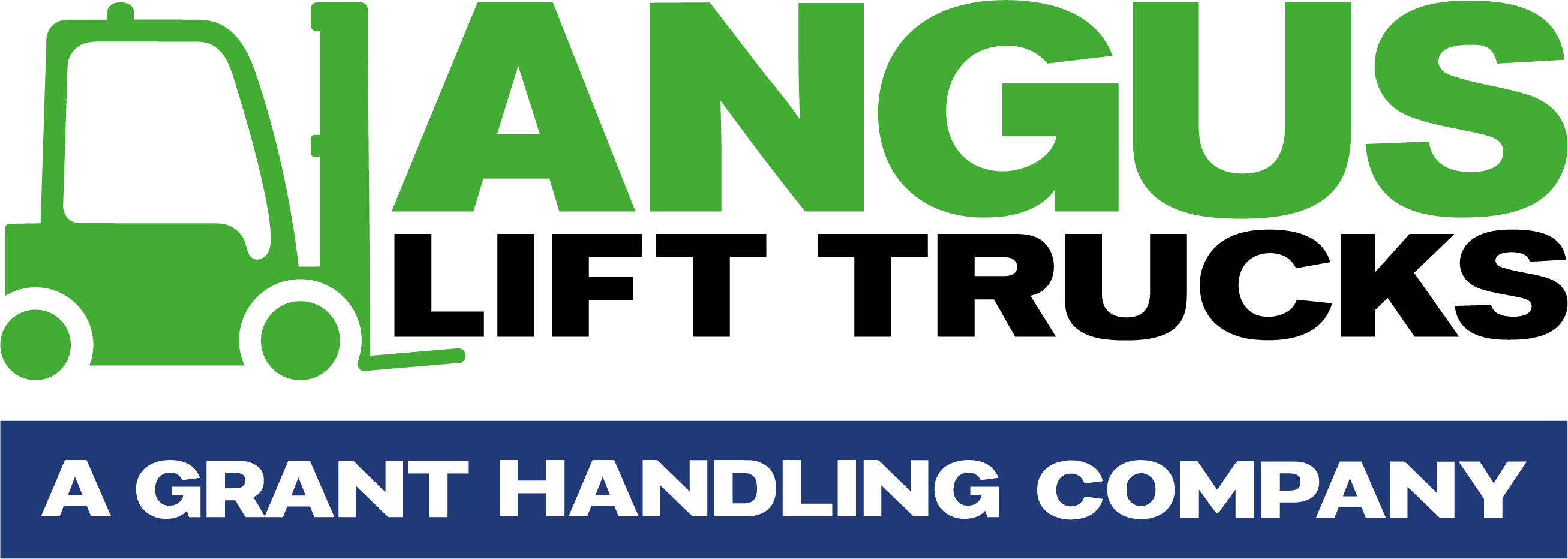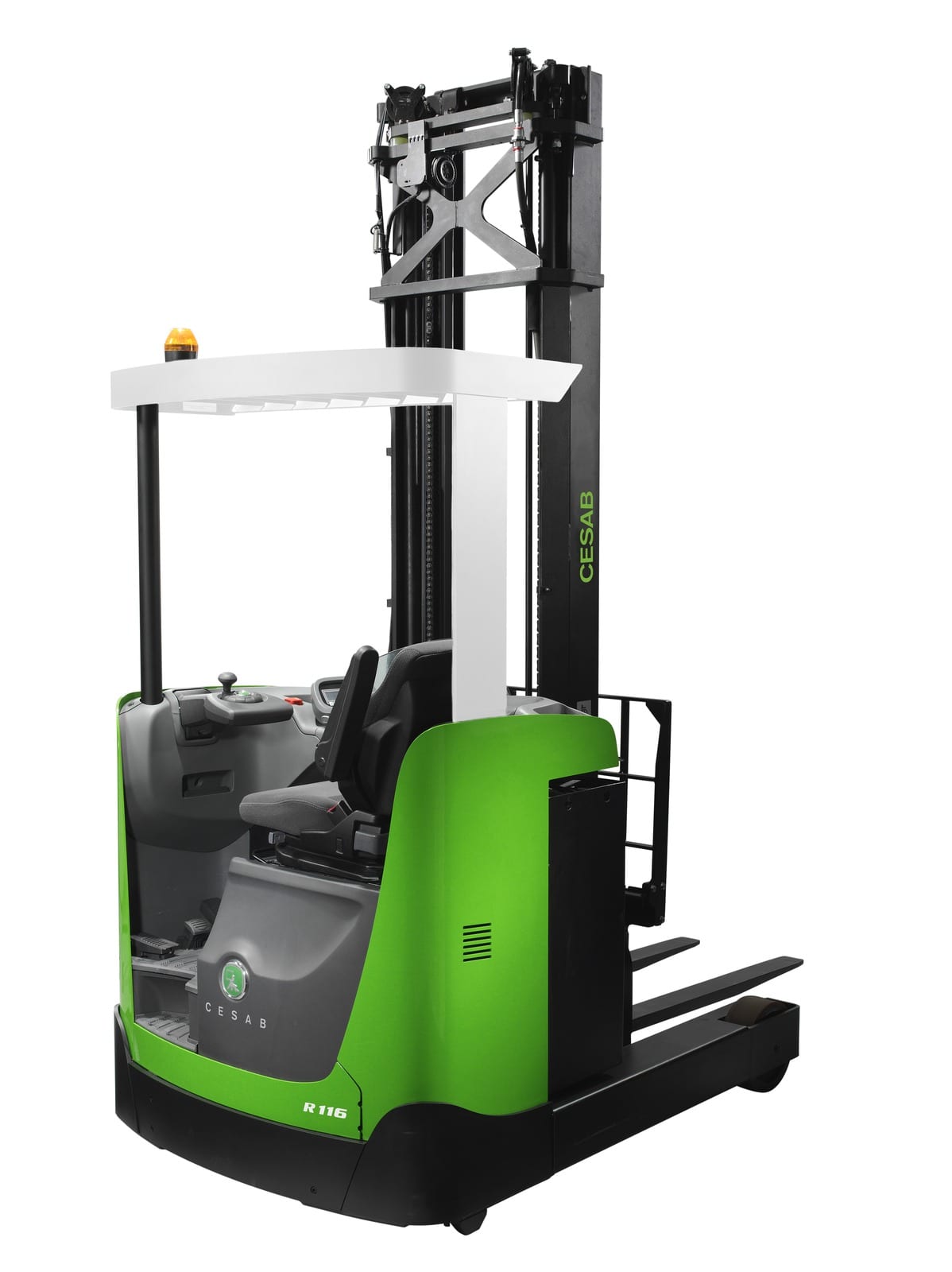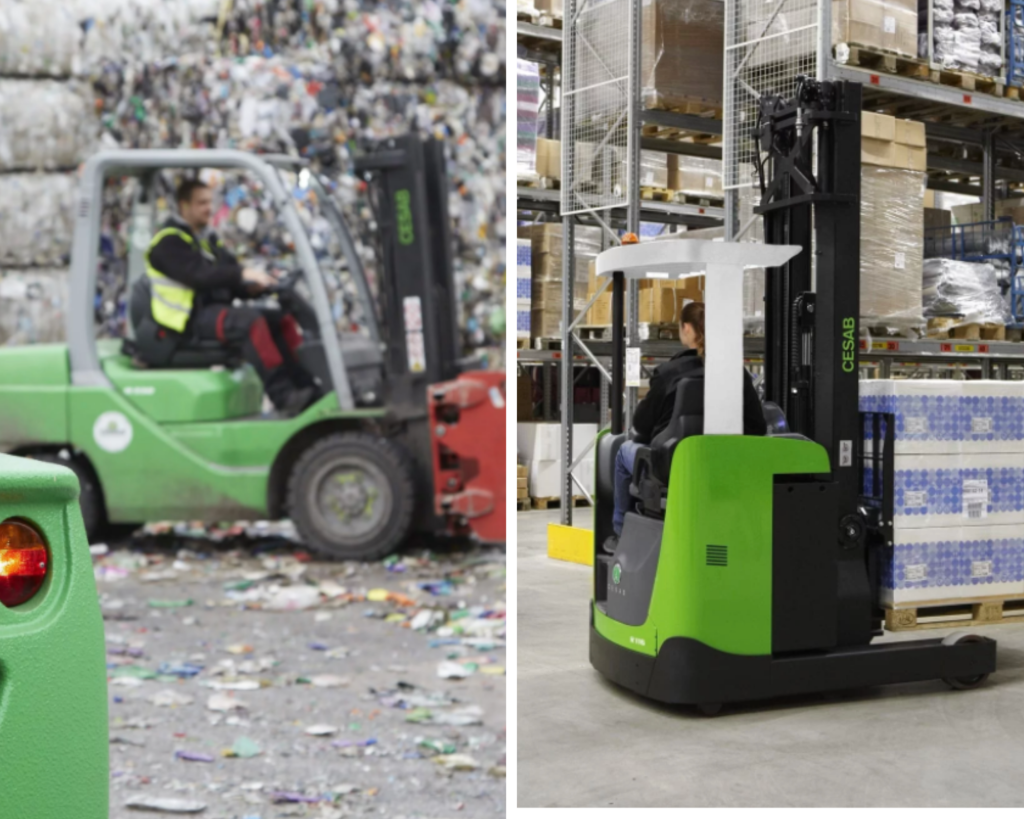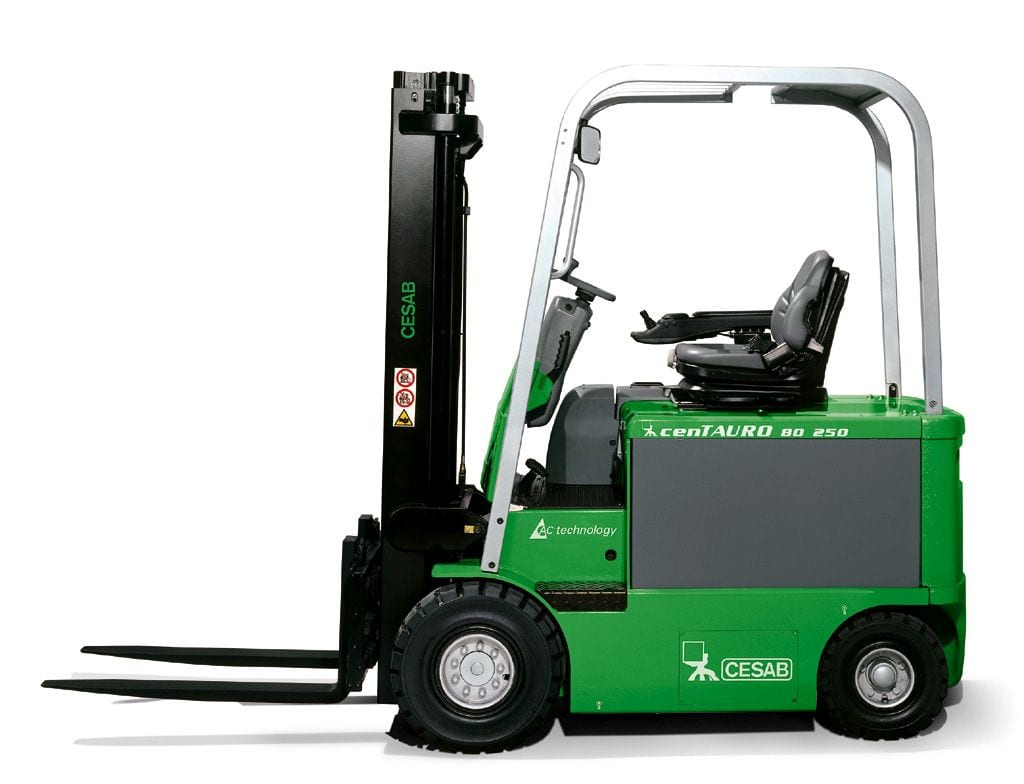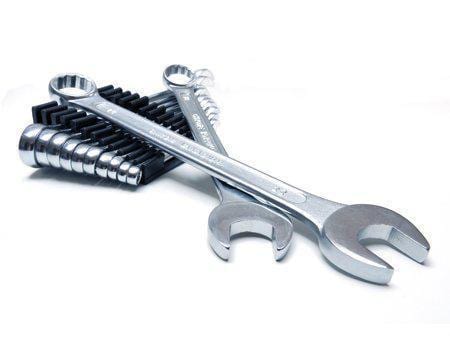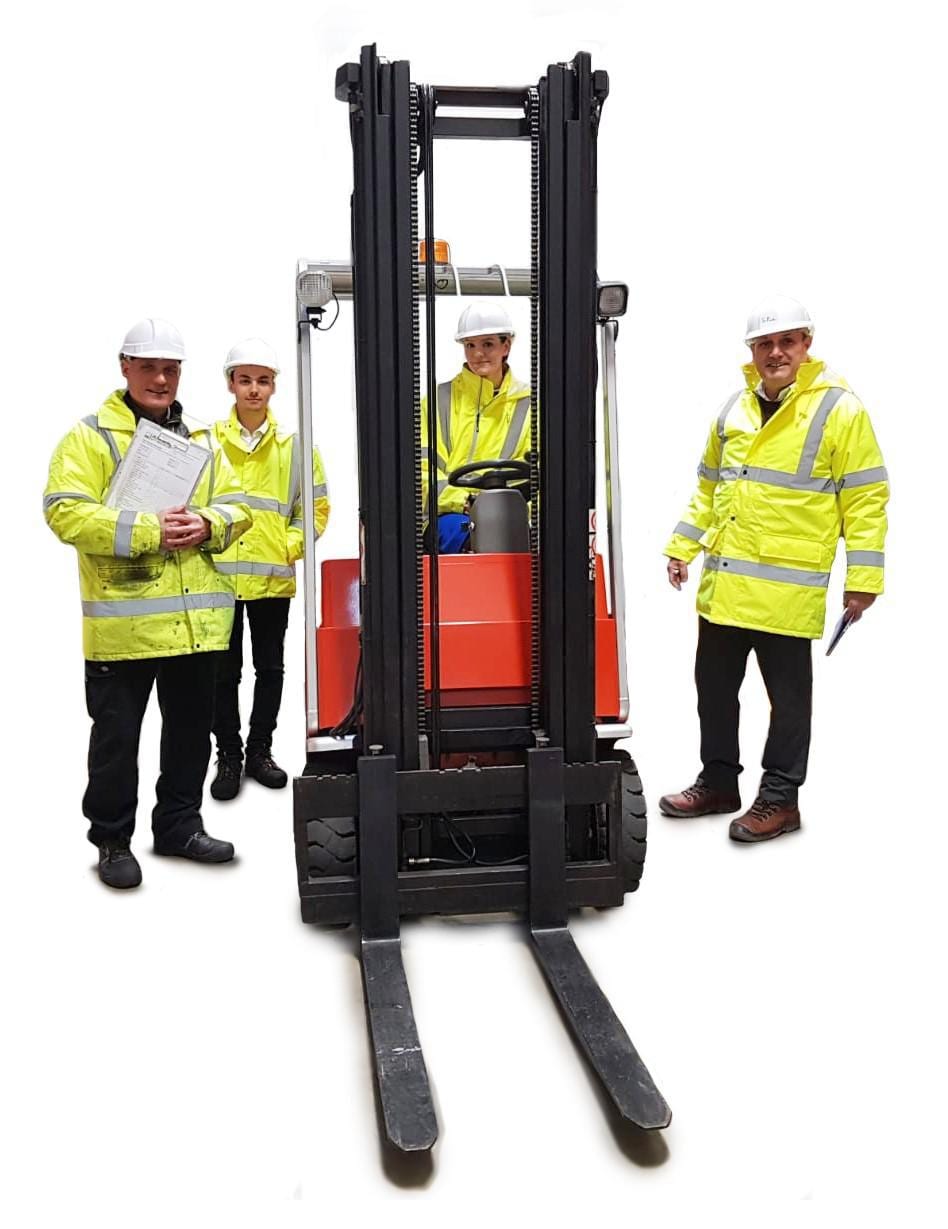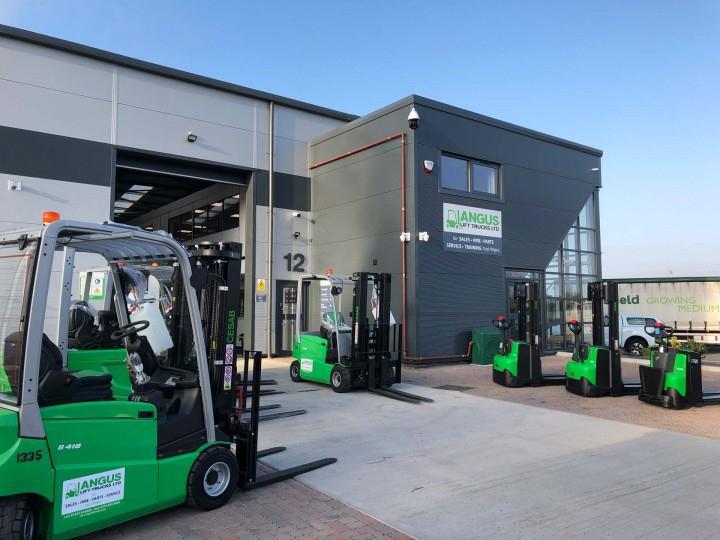Counterbalance and reach forklifts are two of the most popular options for material handling in any warehouse or industrial environment. While these two machines are similar in many ways, there are also some significant differences between the two, and you’re likely to find that one machine is a better fit for your operations.
Today, we’re going to take a closer look at counterbalance forklifts vs. reach trucks to help you decide which of these two designs is the right choice for your needs.
Start by listening to our podcast episode on Counterbalance vs. Reach Forklifts:
Counterbalanced Forklifts
Counterbalanced forklifts are the most common type of lift truck sold at Angus, and they’re the image in most people’s heads when they think of a forklift. These machines are exceptionally versatile, and they have several characteristics that make them ideal for many material-moving applications.
The forks on a counterbalanced lift truck extend from the front of the machine, which makes it easy to position the forks directly under the load you’re moving. The rear wheels of the forklift control the machine’s turning ability, which allows them to manoeuvre in reasonably tight spaces.
The forks extend directly from the front of the machine, which creates an issue with weight distribution. The solution to this problem is how a counterbalance forklift gets its name. A massive counterweight placed at the rear of the forklift helps keep the machine adequately balanced when an oversized load is on the front of the lift.
Counterbalance forklifts are sold and rented in electric, gasoline, and propane versions, and each style of lift offers some advantages and drawbacks. These lifts are available in various sizes that correspond to the load size they can carry. Larger forklifts have a similar footprint to smaller ones, but they’re built with heavier components and larger counterweights to facilitate larger loads.
Counterbalanced forklifts are also available in several different wheel configurations, depending on how the machine will be used. Some models employ four tires while others use three, which provides a tighter turning radius that’s a strong fit for use in tighter spaces such as warehouse aisles.
Cushion tires made of pressed rubber are the most common for indoor applications and paved surfaces. These tires have no tread and offer the tightest turning radius. Treaded pneumatic tires are preferred for manoeuvring over any uneven ground or unfinished floor.
Counterbalanced lift trucks designed for all-terrain applications feature large pneumatic tires with an aggressive tread pattern designed to provide better grip and control on rough or rocky ground. These machines also have more ground clearance, which allows them to move more easily over rocky or uneven terrain.
Reach Trucks
Reach trucks are specialized forklifts designed for use in environments with narrow aisles, such as a warehouse. They’re the most compact type of lift truck, and they also offer a tight turning radius that makes them an excellent tool for use in a warehouse or other confined spaces where manoeuvrability is a concern.
Like a counterbalance forklift, the forks of a reach truck extend from the front of the machine. Instead of a counterweight, these machines employ two legs with small wheels that extend from the front of the machine, which help to balance the load weight.
Since reach trucks are almost always employed indoors, they utilize electric motors. These machines are available in various configurations to handle the ever-changing needs of the environment they’re used in. Depending on the model, a reach truck may handle loads greater than 4,000 pounds and reach heights of 45’ or higher.
Since reach trucks get deployed in a warehouse setting for material picking tasks. They have very little ground clearance and get used on flat ground. A reach truck isn’t viable for material moving applications over uneven ground.
Differences Between Counterbalance Forklifts & Reach Truck Forklifts
While a lot of the functionality of these machines is similar, there are some crucial differences between counterbalance forklifts and reach truck forklifts.
One of the most obvious differences between counterbalance fork trucks and reach forklifts can be found in their respective approaches to load stabilization. Counterbalance trucks, as their name suggests, use a counterweight attached to the back of the truck. This detail is what gives these forklifts the ability to manage heavy loads.
In contrast, reach trucks do not contain this counterweight. They do use a heavy battery to the rear, which provides some balance, but this is augmented by extended support legs that provide the requisite stability.
However, the most significant forklift vs reach truck differences is found in their handling capabilities and manoeuvrability.
Reach trucks are designed for multi-level racking systems in warehouse environments. Depending on the particular model, they can move relatively heavy loads and transport them to heights over 40-feet. Most reach trucks have a handling capacity of between 2,000-4,000 pounds.
Since they’re made for warehouse environments, they offer excellent manoeuvrability. Reach trucks have a tight turning radius, and they have no trouble turning in tight spaces, such as narrow warehouse aisles.
When it comes to counterbalance forklifts vs. reach trucks, counterbalance forklifts have a larger footprint. They’re made to transport heavy loads over long distances, and they’re used in a multitude of environments, from warehouses to logging and construction sites.
Another one of the significant forklift vs reach truck differences is counterbalance forklifts offer much greater material handling capacity than a reach truck. The smallest counterbalance forklift can still handle more material than a heavy-duty reach truck.
Most counterbalance forklifts can accommodate a maximum payload of 5,000-8,000 pounds. All-terrain forklifts and those designed for exceptionally heavy materials can move over 100,000 pounds per load.
Another one of the differences between counterbalance forklifts & reach truck forklifts is their vertical lifting capacity. While counterbalance forklifts are designed to lift loads overhead, the mast does not extend to the heights of a high reach forklift. Most counterbalance forklifts have a vertical lift of 10-15 feet, while four-stage mast forklifts can lift over 30-feet vertically. Meanwhile, the average high reach forklift can lift at least 30-feet, with many reaching upwards of 45 feet.
Looking to Buy or Hire

a forklift?
With 35+ years of experience, we offer our most competitive rates, flexible finance, 4h service promise & more!
Counterbalance vs. reach forklifts: Pros and cons
Both forklift types have advantages and disadvantages. You should have a good sense of their respective strengths by this point in the article, but here is a useful breakdown if you’re trying to figure out which forklift to buy for your business.
1. Counterbalance forklift pros and cons:
Pros:
- Very versatile and suitable for a range of material handling tasks
- As the most common type of forklift, they are familiar to forklift truck operators
- Easily modified
- Most affordable than reach forklifts
- Can lift far heavier loads
- Sturdy and hardwearing
Cons:
- Shorter lifting range
- Require larger spaces to operate comfortably
2. Reach forklift pros and cons:
Pros:
- Precision tool that excels in narrow aisles
- High maneuverability even within tight spaces
- Impressive lifting range
Cons:
- Some models are very expensive to buy and maintain
- Reach forklift trucks require specific training
- Lower load capacity when compared to counterbalance forklift trucks
Wrapping It Up
When it comes to counterbalance forklifts vs. reach trucks, both machines are vital material movers that can dramatically improve the efficiency of your operations. Choosing which machine is the best fit for you is primarily a matter of identifying use cases, the weight of the material you’re moving, and the height you need to lift the material.
Once you have a better idea of the differences between counterbalance forklifts & reach truck forklifts, you should be well on your way to selecting the ideal machine for your needs. Of course, you can contact the team at Angus for any enquiries you may have on hiring forklifts in the Leicester area, Nottingham, Birmingham, Northampton, Warwick, Derby, West Midlands & East Midlands. We can also help with training your staff or servicing your forklifts.
This post is also available in:
Français
Deutsch
Italiano
Português
Español
Български
Hrvatski
Eesti
Latviešu
Lietuvių
Polski
Português
Русский
Slovenčina
Slovenščina
Türkçe
Українська
Albanian
Čeština
Dansk
Nederlands
Ελληνικά
Magyar
Română
